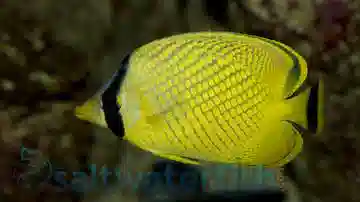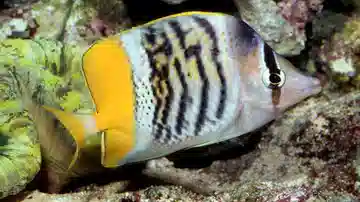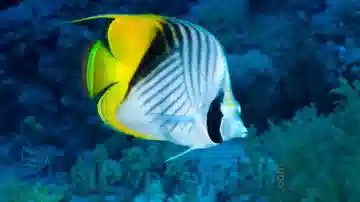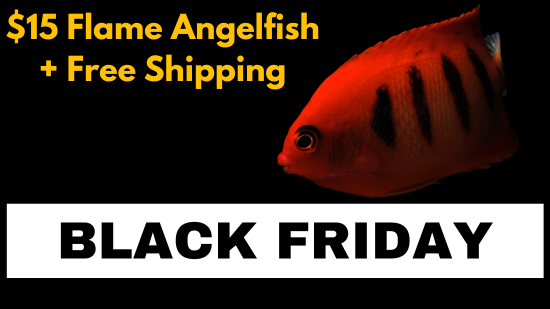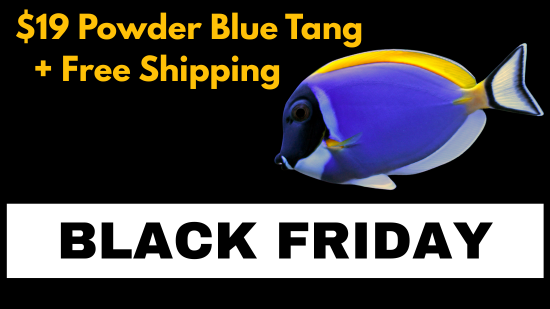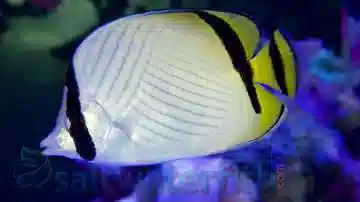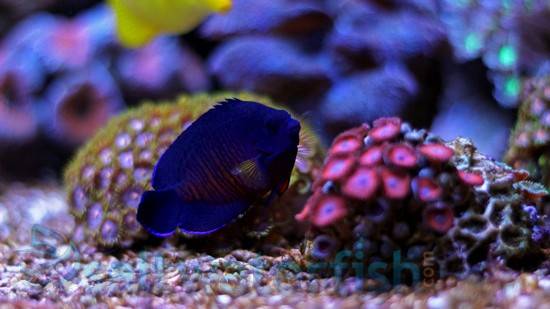Vagabond Butterfly
Chaetodon vagabundus
(1 Reviews)
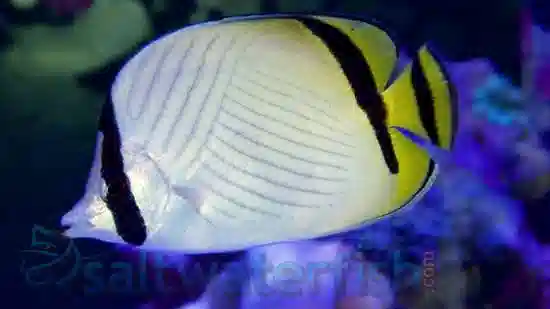
Vagabond Butterfly
Chaetodon vagabundus
(1 Reviews)
{{ item.name }}
Size: {{ item.extra_field_3 }}
${{ getFormattedPrice(item.saleprice) }} ${{ getFormattedPrice(item.price) }}
To join the waiting list, click here
Free Shipping
With
$199.00
or more in Marine Life.
More details...
Vagabond Butterfly Care Facts
| Care Level: | Moderate |
|---|---|
| Temperament: | Peaceful |
| Diet: | Omnivore |
| Reef Safe: | No |
| Minimum Tank Size: | 120 gallons |
| Max Size: | 9 inches |
The Vagabond Butterfly (Chaetodon vagabundus) is a hardy Indo Pacific butterflyfish with a bold crisscross pattern that stands out in fish only marine aquariums. It suits hobbyists who want an active centerpiece fish and clear guidance on common concerns like reef safety, feeding, and long term care. Customers choose this species because it ships well when handled carefully, accepts varied foods once settled, and behaves predictably in spacious tanks. Our specimens are selected for body weight, alertness, and steady swimming, allowing them to adjust smoothly to prepared foods.
Appearance
The Vagabond Butterfly has a pale whitish to yellowish body covered in fine diagonal lines that cross each other to form a crisscross pattern. A black band runs vertically through the eye, and a second dark band marks the tail region. Yellow dorsal, anal, and caudal fins frame the pattern, and juveniles show a fading ocellus on the soft dorsal fin.
Care & Requirements
A single Vagabond Butterfly needs about 120 gallons so it can swim freely and hold a territory without stress. Provide open space along the front of the tank and rockwork that forms arches and caves for shelter. This species lives on reef slopes and lagoons to about 30 m and can tolerate areas with turbid water in the wild, so moderate flow and strong filtration support long term stability. Keep temperature at 75 to 82 °F, pH at 8.1 to 8.4, and specific gravity at 1.020 to 1.025.
Feed two to three small meals daily using frozen mysis, chopped marine meats, and quality pellets, plus algae sheets several times per week. The fish will graze on surfaces between meals. Use a slow drip acclimation over 30 to 45 minutes and keep lighting low during introduction. Once settled, most individuals explore consistently and feed readily.
Is the Vagabond Butterflyfish reef safe in a mixed reef tank?
No. This species eats many corals and anemones and is best kept in fish only or FOWLR systems.
What should I feed a Vagabond Butterflyfish each day?
Offer small meals two or three times daily using a mix of frozen foods, pellets, and algae sheets.
How long does it take a Vagabond Butterflyfish to settle into a new tank?
Most settle within a few days in a calm tank with hiding places, though some need one to two weeks.
Diet & Feeding
In the wild, Vagabond Butterflyfish graze on algae films, coral polyps, and small invertebrates. In captivity, use frozen mysis, chopped seafood, high quality pellets, and dried seaweed. Feed two or three small meals per day to match their natural grazing pattern.
Tank Mates & Compatibility
Vagabond Butterflies mix well with tangs, many wrasses, larger damselfish, and medium to large angels in spacious systems. Choose active companions that feed well and avoid very small or slow species. This fish forms monogamous pairs in the wild and may act territorial toward similar butterflyfish in smaller tanks. If keeping a pair, introduce both fish at the same time in a large aquarium.
Can Vagabond Butterflyfish live with tangs and angelfish?
Yes. They do well with tangs and many angelfish when given enough space and frequent feedings.
Should Vagabond Butterflyfish be kept singly or in pairs?
Most aquariums keep one, but a compatible pair can work in a large tank with clear sight breaks.
Are invertebrates safe with a Vagabond Butterflyfish?
Clams, ornamental shrimp, and most corals are not safe around this fish.
Aquaculture/Availability
Most Vagabond Butterflyfish in the trade are wild caught from Indo Pacific regions. Captive bred options are rare and not available in consistent numbers. Availability changes with seasonal collection and shipping conditions.
Are Vagabond Butterflyfish captive bred or wild caught?
Most available specimens are wild caught.
Why do Vagabond Butterflyfish go out of stock so often?
Supply depends on weather, transport routes, and collection windows.
Do captive bred Vagabond Butterflyfish ship better than wild caught fish?
Captive bred individuals adapt easily where available, but they remain uncommon.
FAQ
How large does a Vagabond Butterflyfish get in a home aquarium?
They reach up to about 9 in over several years and grow steadily when fed varied foods and kept in stable water.
What size tank is best for a Vagabond Butterflyfish long term?
A 120 gallon or larger aquarium provides enough swimming room and helps maintain stable conditions.
Where do Vagabond Butterflyfish come from in the wild?
Their range extends from the Red Sea and East Africa through the Indo Pacific islands to the central Pacific.
How difficult is it to care for a Vagabond Butterflyfish compared with other butterflyfish?
They are considered one of the more adaptable butterflyfish but still need strong filtration and stable water.
What water parameters do Vagabond Butterflyfish need to stay healthy?
Maintain 75 to 82 °F, pH 8.1 to 8.4, specific gravity 1.020 to 1.025, and low nutrients.
How often should I feed a Vagabond Butterflyfish to keep its weight up?
Feed two or three small meals per day using frozen foods, pellets, and algae sheets.
Do Vagabond Butterflyfish nip at clams or soft corals more than hard corals?
They may sample many sessile invertebrates, including soft corals, stony corals, zoanthids, and clams.
How long can a Vagabond Butterflyfish live in captivity with proper care?
They can live around 10 years when kept in a stable aquarium and fed a varied diet.
These guys are doing GREAT! Ate lots of food the first night. Highly recommended! Not shy either. Mine was out and about the first day.
Reviewed by: Jason Landers on Dec. 27, 2014


